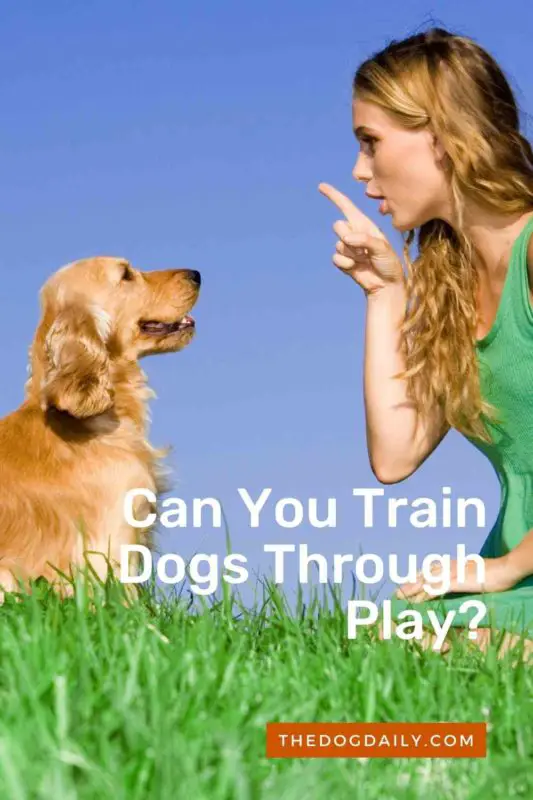Can Dogs be Trained Through Play?
In 1973, Kay Laurence got her first dog, a Cavalier King Charles Spaniel, and a life-changing piece of advice from her father. “You’d better take a training class,” he said. Thirty-five years later, Laurence is the head of the class. Based in the UK, she runs Learning About Dogs, a business that organizes conferences and offers classes all on dog training. In her latest book, Learning Games, Laurence advocates teaching dogs through play. Below, she explains both how and why.
The Nature of Dogs
“Playtime is nature’s classroom,” says Laurence. “Puppies will wrestle, stalk, rip toys, carry and explore. All of these behaviors are rehearsals for real life. Play is where life skills are learned.” For example, puppies of Border Collies descended from gathering breeds will stalk each other during play to prepare for their adult role of herding sheep. Gordon Setters, traditional bird-hunting dogs, will practice for adult life by neck-snapping small stuffed toys. In nature, many of these games are guided by a trainer — the pup’s parent.
Explains Laurence: “Pack members do not teach their youngsters with leashes and praise. They play games with young learners. They set rules and decide when to let their pups succeed.” Though humans have designed their methods of training young dogs that do not involve play, Laurence believes these techniques are not the most effective. “Traditional dog training relies on our opinion of how a dog should perform. For example, a ‘dog sits when you press its hips down.’ Unfortunately, this fails with many dogs since their reaction to pressure is often to push back.”
What Play Can Teach Dogs
“Play training seeks to induce natural responses in the dog,” says Laurence. Those natural responses can then be elicited from the dog on command when obedience is crucial to safety or well-being. For example, Laurence uses play to teach her pupils how to sit still, essential for excitable dogs that tend to jump on visitors to your home. “Through play, we can stimulate a dog to maintain absolute stillness in anticipation.”
In a game, she calls, “Where’s the Mouse?” Laurence uses the canine tendency to focus intently on small prey. “When a dog spies a mouse or rabbit disappearing down a hole, it will maintain a focus on that hole for many hours. It will be able to stay perfectly still for a long period,” she says. For this game, then, Laurence puts a counterfeit “mouse” — in this case, a piece of cheese or sausage — in her hand and waits until the dog fixates on it. At this point, Laurence puts the “mouse” in her pocket, leaving the dog frozen, still in excited anticipation of its feast. Laurence eventually feeds the treat to the dog, reinforcing the pup’s behavior.
Other “life skills” imparted by Laurence, her trainers, and students of her methods include focus, balance, coordination, self-awareness, and puzzle-solving.
Try This Game at Home with Your Dog
For safety’s sake, your dog should be able to run from one location to another based on your direction. If Fido is in the street staring down an approaching car, you need to be able to convince him to run to the curb and fast. To train your pet to move on command, Laurence suggests teaching “The Sausage Bowling Game,” appropriate for dogs 20 weeks and older. Here’s how to play:
- Begin on a non-slippery surface, showing your pup a treat in your hand.
- Make sure it watches your hand as you slowly bend and make an underhand arc as if you were bowling in slow motion.
- Release the treat once your arm reaches the end of the arc, just as you would a bowling ball. Allow the pup to chase and then eat the treat.
- Repeat, “bowling” the treat to a different location each time. Once the dog has mastered following the arc of your arm to your area of choice, make the game harder by turning suddenly just before you release.
- With regular “training,” your dog will follow your command whether or not you’re throwing a reward.
“This uses all the elements of nature’s purpose of play,” says Laurence. “The older pack member, you, has alerted the pup to a chase situation, and the pup is instinctively drawn to join you. Every time they get to employ a natural, instinctive behavior, they enjoy it more and more. What a fabulous way to teach safety!”
Article written by Author: Darcy Lockman

